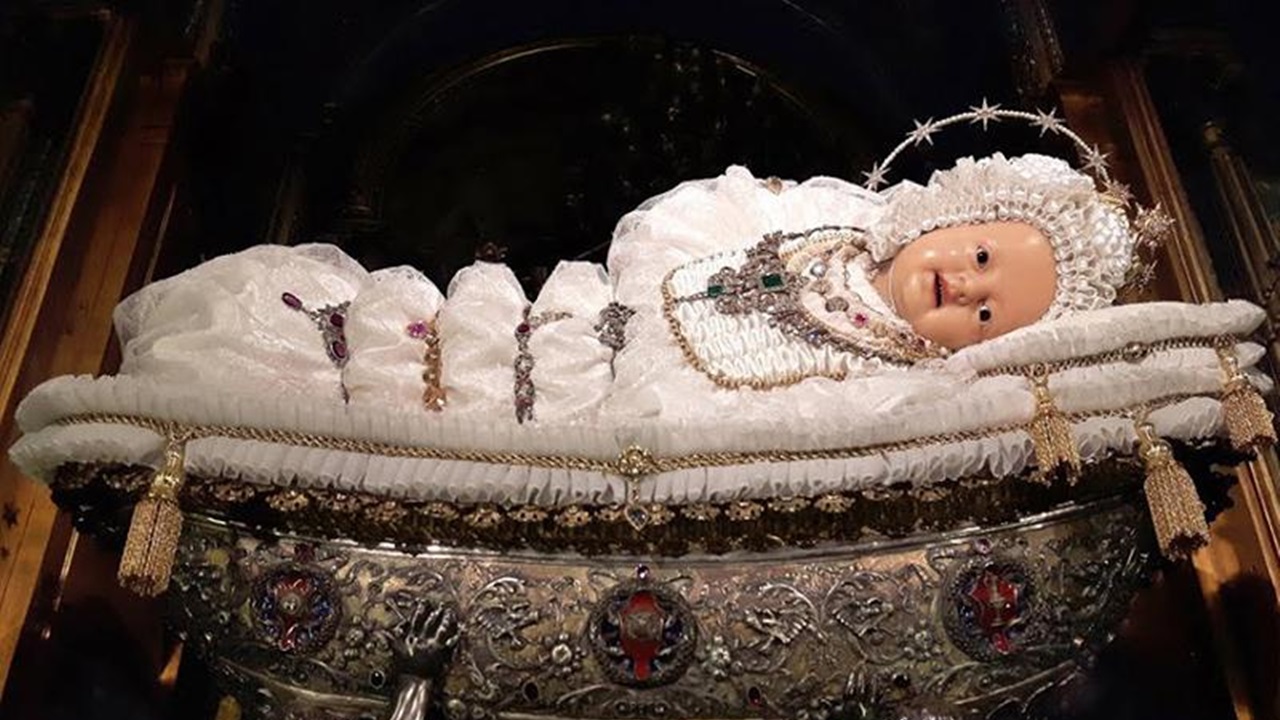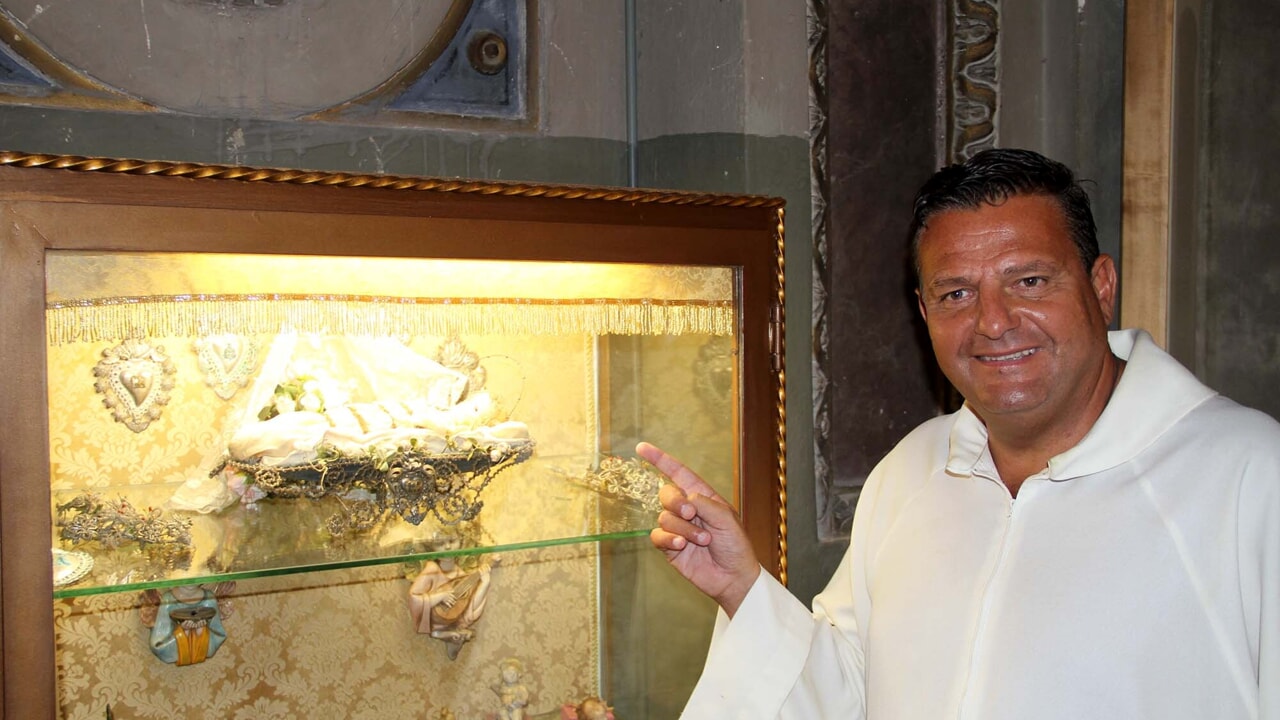The story of Maria Bambina, from creation to final resting place
Milan is the image of fashion, of the frenetic life of chaos, of the monuments of Piazza Affari and of the Stock Exchange. But this city also has another face, that of faith, religiosity and popular beliefs. Not far from the Cathedral stands the general house of the Sisters of Charity, where the image of Maria Child.

The origins of Maria Bambina
To understand the origin of this wax statue, we must travel through time to the years 1720-1730. At that time, Sr Isabella Chiara Fornari, a Franciscan from Todi, loved to create small statues of the Child Jesus and Mary Child in wax. One of these statuettes was donated to Monsignor Alberico Simonetta of Milan and, after his death, the effigy passed at Capuchin nuns of Santa Maria degli Angeli, who spread the devotion.

However, during the years between 1782 and 1842, the religious congregations were suppressed by decree of Emperor Joseph II and later of Napoleon. Due to this, the simulacrum of Maria Bambina was taken by the Capuchin nuns to the Augustinian convent, and then passed into the hands of the Lateran Canonesses. Subsequently, the pastor Father Luigi Bosisio he took care of the effigy, with the aim of passing it on to a religious institution that could keep the devotion alive.
This simulacrum then passed to the hospital Cicero of Milanentrusted to Sister Teresa Bosio, superior of the Sisters of Charity of Lovere. The religious congregation had been founded in 1832 by Bartolomea Capitanio and, after being called by the Cardinal Gaysruck to assist the sick in the hospital, these nuns took care of the simulacrum. Soon, both nuns and sick people turned to Maria Little girl to find strength, hope and protection.
In 1876, following a transfer, the simulacrum finally arrived in via Santa Sofia, in Milan. After more than a century, the effigy of Mary Child in wax began to show signs of deterioration and therefore, it came replaced with another picture. The original, however, is exhibited every year on 8 September inside the religious house.